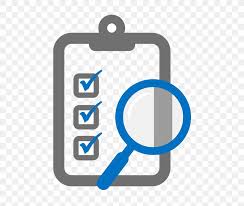Elevating Organic Search Visibility: 15 On-Page SEO Optimization Strategies
In the dynamic digital ecosystem, achieving a prominent online presence is crucial for sustained success. Organic search engine optimization (SEO), focusing on attracting users through unpaid search engine results, is paramount. While off-page SEO strategies play a vital role, on-page optimization forms the bedrock of high search engine rankings and targeted user acquisition. This analysis delves into fifteen proven on-page SEO techniques to enhance website performance and drive measurable results. We will explore these strategies through the lens of established SEO principles, including the PageRank algorithm and the impact of user experience on search engine rankings. We will also incorporate elements of information retrieval and user interface design theory.
- Structured Content Optimization: Enhancing Discoverability: Effective content architecture underpins successful SEO. Applying principles of information retrieval, we must organize content logically, using semantic structure and keyword mapping. Employing header tags (H1-H6) to delineate sections and incorporating relevant keywords within these headings, improves both user comprehension and search engine indexing. This structured approach, based on hierarchical organization of information, allows search engine crawlers to efficiently parse content, leading to enhanced indexing and ranking.
- Keyword Research and Search Intent Analysis: Targeting the Right Audience: Prior to content creation, meticulous keyword research is indispensable. Tools such as Google Keyword Planner, Ahrefs, and SEMrush facilitate identifying high-volume, low-competition keywords aligning with business goals. Understanding search intent—whether users seek information, products, or services—is critical. This aligns with the principles of user-centered design, ensuring content meets specific user needs and search queries. The chosen keywords should then be naturally integrated into title tags, meta descriptions, header tags, image alt text, and the body of the content.
- Compelling Title Tags and Meta Descriptions: Optimizing Click-Through Rates (CTR): Title tags and meta descriptions are critical for attracting users from search engine results pages (SERPs). These elements must be concise, relevant, and captivating. Incorporating the primary keyword strategically while adhering to character limits (approximately 60 characters for title tags) maximizes visibility and click-through rates. The principles of persuasive writing and effective advertising can be utilized to craft compelling meta descriptions that highlight key benefits and encourage user engagement.
- URL Optimization: Enhancing User Experience and Search Engine Crawlability: Clear, concise, and keyword-rich URLs enhance both user experience and search engine crawlability. Avoiding excessive length or extraneous characters ensures efficient indexing and navigation. URL structure should reflect a logical site hierarchy, promoting intuitive site navigation. The underlying principle here focuses on aligning URL structure with information architecture and user expectations.
- High-Quality Content Creation: Driving User Engagement and Search Engine Rankings: Creating valuable, engaging, and original content is fundamental to long-term SEO success. The content must provide substantial value to the target audience, addressing their needs and information demands. While incorporating relevant keywords is crucial, avoiding keyword stuffing is paramount to avoid penalties from search engines. This emphasizes a user-centric approach to content creation, aligning with the PageRank algorithm's prioritization of authoritative and valuable content.
- Image Optimization: Improving Accessibility and Search Engine Indexing: Images enhance content appeal but must be optimized for both aesthetics and search engine indexing. Using descriptive file names containing relevant keywords and adding comprehensive alt text is crucial for accessibility and search engine crawlers. Image compression minimizes page load times, a key factor in user experience and search engine ranking. This technique applies principles of Universal Design and ensures content accessibility for users with visual impairments.
- Site Speed Optimization: Enhancing User Experience and Search Rankings: Fast-loading websites are crucial for user satisfaction and search engine rankings. Techniques such as CSS and JavaScript minification, browser caching, and leveraging a Content Delivery Network (CDN) significantly improve site speed. Tools like Google PageSpeed Insights provide insights for optimization, improving user experience and increasing the likelihood of high rankings. This strategy aligns with Google's focus on Core Web Vitals metrics, which directly impact search rankings.
- Mobile-First Indexing and Responsiveness: Adapting to Mobile-Dominated Search: Given the predominance of mobile browsing, a responsive, mobile-friendly website design is essential. Google's Mobile-Friendly Test validates mobile responsiveness. Ensuring a seamless user experience across various devices improves engagement and ranking, aligning with Google's mobile-first indexing approach.
- Strategic Internal Linking: Enhancing Site Navigation and Link Equity Distribution: Internal linking guides users within the website and distributes link equity, improving search engine crawlability and enhancing site architecture. Linking to relevant pages improves site navigation and user experience. The strategy follows principles of network graph theory, where internal links create a web of interconnected pages, aiding search engine discovery.
- Schema Markup: Enhancing Search Engine Understanding and Rich Snippets: Implementing schema markup (structured data) provides search engines with clearer context, resulting in richer, more informative search results (rich snippets). Schema improves search engine understanding of content, leading to improved click-through rates. This technique directly impacts how search results are displayed, increasing visibility and click-throughs.
- Intuitive Website Navigation: Guiding Users and Improving User Experience: Simple, clear navigation enhances user experience, a key ranking factor. Intuitive navigation allows users to easily find information, lowering bounce rates and increasing engagement. This approach utilizes principles of usability engineering, designing a user-friendly and efficient website architecture.
- SSL Certificate Implementation: Enhancing Security and Search Rankings: An SSL certificate (HTTPS) is crucial for website security and is a ranking factor. HTTPS indicates a secure connection, enhancing user trust and site credibility, a factor directly impacting search engine rankings. This aligns with Google's emphasis on secure browsing and user safety.
- Social Media Integration: Expanding Reach and Brand Visibility: Including social media sharing buttons encourages content dissemination, boosting brand visibility. Increased social signals indirectly influence search engine rankings. This strategy utilizes principles of social media marketing to enhance brand awareness and increase website traffic.
- Data-Driven Optimization and Continuous Monitoring: Adapting to Evolving SEO Trends: Regularly monitoring website performance through Google Analytics and other SEO tools provides data-driven insights. Tracking metrics such as organic traffic, bounce rates, and conversion rates enables continuous optimization and strategy refinement. This approach utilizes A/B testing and data analysis to ensure that SEO efforts are aligned with business goals and user needs.
Conclusions and Recommendations: Mastering on-page SEO is an iterative process demanding continuous adaptation to evolving search engine algorithms and user behavior. The integration of the aforementioned strategies, coupled with a steadfast focus on providing valuable content and a positive user experience, forms the basis for long-term organic growth. Further research could explore the evolving interplay between on-page and off-page SEO strategies in the context of artificial intelligence-driven search engine advancements. The impact of these techniques on conversion rates and revenue generation should also be explored further, focusing on the quantitative correlation between improved on-page SEO and business outcomes. The practical application of these principles should be tested across diverse website types and industries, further establishing the generalizability of this framework.
Reader Pool: Considering the multifaceted nature of on-page SEO, how effectively do these techniques align with the specific requirements and goals of a niche e-commerce website versus a blog-focused informational website?



